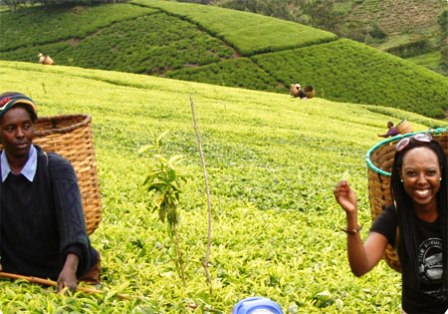Kenya Tea
Hope you are looking for information about Kenya tea. This page will guide you free of charge. Tea is a relative agricultural newcomer to Kenya.
Despite this, Kenya has made excellent progress in developing its tea industry. Kenyan tea is a valuable cash crop for its farmers, for many of them it is the sole basis of their yearly income.
Kenya tea is divided into two categories. There are the privately owned large plantations like African highlands, Brooke Bond, and Eastern produce limited.
There are other individuals’ factories operated by agents.
These privately owned plantations are known as the Kenya Tea Growers Association. Kericho is their base and they control nearly forty percent of Kenya’s tea.
The second category is the small scale farmers who have formed a co-operative.
Other Pages of Interest
Factories are built by the government for them. Sixty percent of the Kenya tea is controlled by these farmers
The small scale farmers also produce the highest grades of tea. Kenya Tea Development manages their tea. They have a total of forty five factories. The best of Kenya tea grows in the Eastern region of the Rift valley that is the Kenyan highlands.
Kenya best seasons are two and both are the long rains seasons. During these seasons the tea is very high and sometimes the factories can not handle the large volumes.
Kenya Best Tea has long been considered a health-enhancing beverage. It is a natural drink that contains no additives, preservatives or artificial coloring and is cholesterol free when taken without milk or sugar.
Kenya Best Teas are famous for their brightness, attractive color, brisk flavor and textures of fragrant leaves. Traditionally used in blending, Africa teas are now emerging in their own right in the specialty market.
The plucking of Kenya tea is meticulously done to ensure that only the choicest upper two leaves and a bud are picked.
Tea bushes are plucked on a regular cycle ranging from 7 to 14 days. As a result Kenya tea has won international acclaim for its consistent high quality and excellent delightful aroma.
Kenya natural tea is of a large variety there is Fanning 1(F1), Primary grades (Broken pekoe1 (BP1), Pekoe Fanning1 (PF1), Pekoe Dust (PD), Dust1 (D1).
Secondary grades Dust (D), Broken Mixed Fanning (BMF), and Orthodox teas which include Pekoe (P), Flowery Pekoe (FP), Flowery Orange Pekoe (FOP), Orange Pekoe (OP), Broken Orange Pekoe Fanning (BOPF), and Dust (D)
The difference between all types of teas commercially available internationally is dictated by the method of processing. Most Kenyan teas are manufactured using the cut, tear and curl (CTC) method of manufacture.
Recent Articles
-
Garam Masala Appetizers ,How to Make Garam Masala,Kenya Cuisines
Sep 21, 14 03:38 PM
Garam Masala Appetizers are originally Indian food but of recent, many Kenyans use it. Therefore, on this site, we will guide you on how to make it easily. -
The Details of the Baruuli-Banyara People and their Culture in Uganda
Sep 03, 14 12:32 AM
The Baruuli-Banyala are a people of Central Uganda who generally live near the Nile River-Lake Kyoga basin. -
Guide to Nubi People and their Culture in Kenya and Uganda
Sep 03, 14 12:24 AM
The Nubians consist of seven non-Arab Muslim tribes which originated in the Nubia region, an area between Aswan in southern








New! Comments
Have your say about what you just read! Leave me a comment in the box below.